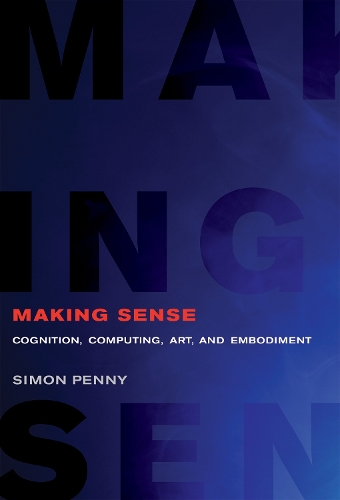
Making Sense: Cognition, Computing, Art, and Embodiment
(Paperback)
Publishing Details
Making Sense: Cognition, Computing, Art, and Embodiment
By (Author) Simon Penny
MIT Press Ltd
MIT Press
9th July 2019
United States
Classifications
Professional and Scholarly
Non Fiction
Media studies
Cognition and cognitive psychology
700.1
Physical Properties
Paperback
540
Width 152mm, Height 229mm, Spine 22mm
Description
Why embodied approaches to cognition are better able to address the performative dimensions of art than the dualistic conceptions fundamental to theories of digital computing.In Making Sense, Simon Penny proposes that internalist conceptions of cognition have minimal purchase on embodied cognitive practices. Much of the cognition involved in arts practices remains invisible under such a paradigm. Penny argues that the mind-body dualism of Western humanist philosophy is inadequate for addressing performative practices. Ideas of cognition as embodied and embedded provide a basis for the development of new ways of speaking about the embodied and situated intelligences of the arts. Penny argues this perspective is particularly relevant to media artspractices. Penny takes a radically interdisciplinary approach, drawing on philosophy, biology, psychology, cognitive science, neuroscience, cybernetics, artificial intelligence, critical theory, and other fields. He argues that computationalist cognitive rhetoric, with its assumption of mind-body (and software-hardware) dualism, cannot account for the quintessentially performative qualities of arts practices. He reviews post-cognitivist paradigms including situated, distributed, embodied, and enactive, and relates these to discussions of arts and cultural practices in general. Penny emphasizes the way real time computing facilitates new modalities of dynamical, generative and interactive arts practices. He proposes that conventional aesthetics (of the plastic arts) cannot address these new forms and argues for a new "performative aesthetics." Viewing these practices from embodied, enactive, and situated perspectives allows us to recognize the embodied and performative qualities of the "intelligences of the arts."
Reviews
The history of computing, cybernetics and AI are reinterpreted through cognitive perameters, and the difficult relationship between the logic of cognitive science and the "intelligence" of art (or "situated cognition") is amply debated making the reading of this book a desirable, intense and informed experience.
Neutral.itAuthor Bio
Sam Harris is the author of five New York Times bestsellers. His books include The End of Faith, Letter to a Christian Nation, The Moral Landscape, Free Will, Lying, and Waking Up. The End of Faith won the 2005 PEN/Martha Albrand Award for Nonfiction. His work has been published in more than twenty languages. Harris has written for the New York Times, the Los Angeles Times, the Economist, The Times, the Boston Globe, the Atlantic, Annals of Neurology, and other outlets. He received a degree in philosophy from Stanford University and a PhD in neuroscience from UCLA. Please visit his website at SamHarris.org.
